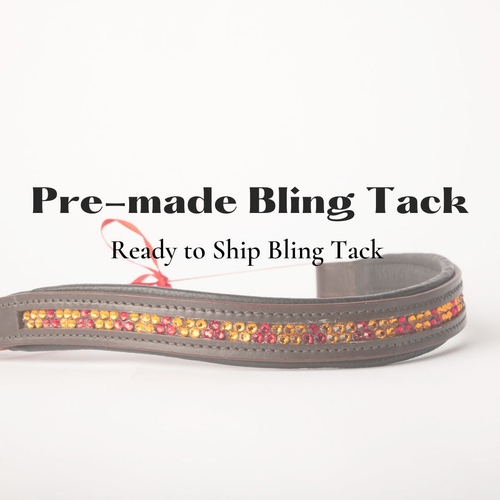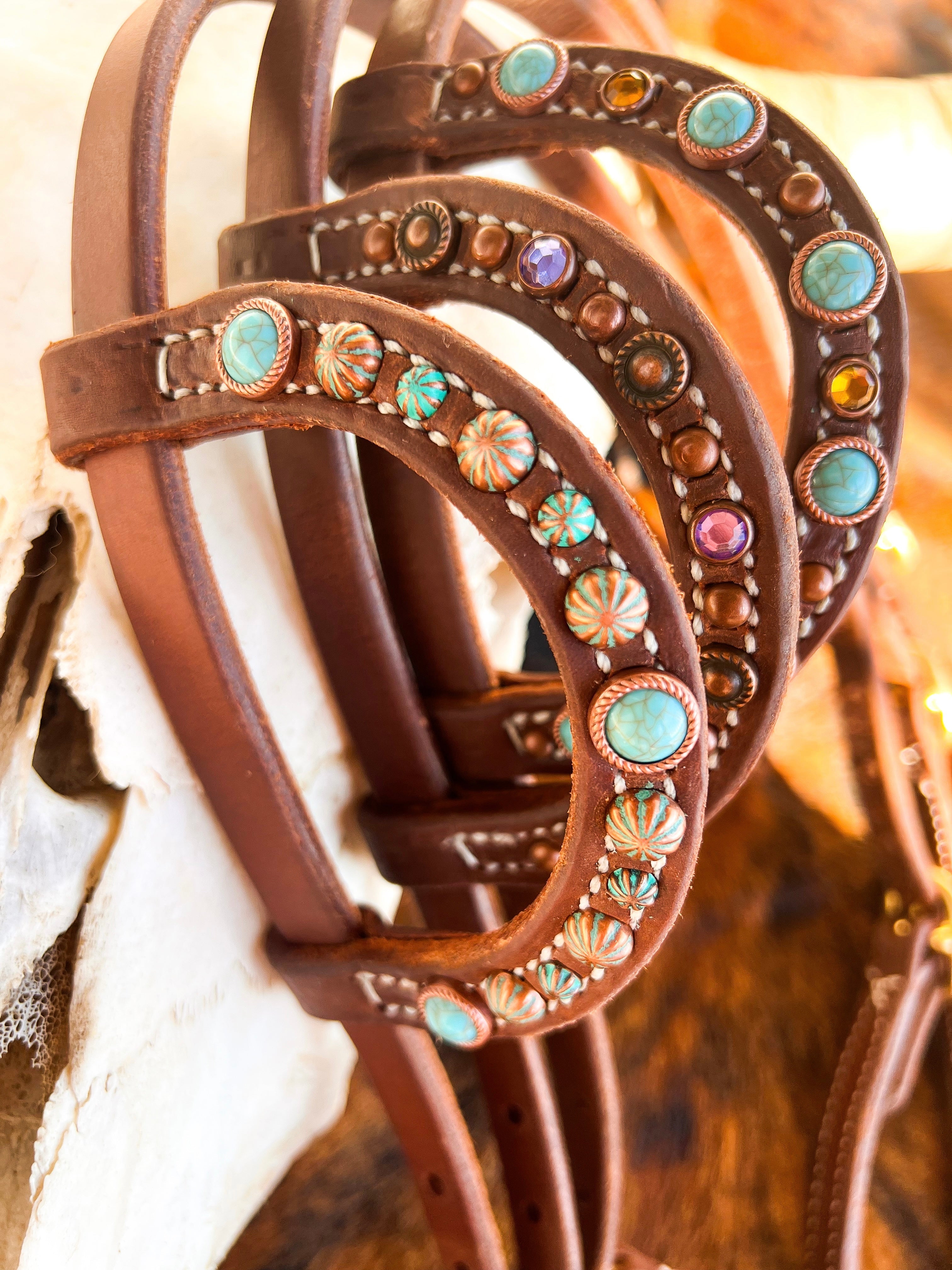How to Choose the Right Headstall for Your Horse
A Practical Guide for Western Riders
When it comes to horse tack, the headstall is more than just a way to hold the bit—it's a key part of communication between you and your horse. Whether you're riding trails, barrel racing, or working cattle, choosing the right headstall ensures both comfort and control.
Here’s what you need to know when picking out the best headstall for your horse.
🐴 What Is a Headstall?
The headstall is the part of the bridle that fits over your horse’s head and holds the bit in place (unless you’re using a bitless setup). In Western riding, headstalls come in a variety of styles, materials, and designs—each with its own purpose and fit.
1. Choose the Right Type of Headstall
There are three common types of Western headstalls:
➤ One-Ear Headstall
-
Slides over one ear
-
Minimal and stylish
-
Best for trained horses who respond well to subtle cues
➤ Two-Ear Headstall
-
Loops over both ears
-
Offers more balance than a single-ear
-
Still best suited for light riding or well-trained horses
➤ Browband Headstall
-
Includes a band across the forehead and throatlatch
-
Very secure and great for everyday riding, training, or working horses
-
Recommended for young, green, or energetic horses
2. Pick the Right Size
Just like saddles, headstalls come in different sizes. A proper fit helps avoid rubbing, pinching, or slipping.
Standard Sizes:
-
Horse/Full Size: Fits most average-sized horses (14.2 to 16 hands)
-
Cob: For smaller-headed horses or Arabians
-
Warmblood/Draft: For larger breeds
✅ You should be able to fit 2–3 fingers under the throatlatch and see 1–2 wrinkles at the corners of the mouth from the bit. If the cheeks bunch or the bit hangs too low, adjustments are needed.
3. Consider Your Horse’s Needs
Each horse is different. When choosing a headstall, think about:
-
Temperament – A calm, seasoned horse may do well with a one-ear; younger or more reactive horses benefit from browbands.
-
Training Level – Horses still learning need more secure tack.
-
Bit Type – Some headstalls are made specifically to accommodate certain bits or bitless designs.
4. Look for Quality Materials
Choose a headstall made from:
-
High-quality leather – Durable, flexible, and softens over time with care
-
Biothane or nylon – Great for trail riding or wet conditions
-
Stitching and hardware – Check for strong stitching and rust-resistant buckles or conchos
🛠️ Pro Tip: Look for headstalls with Chicago screws or buckle ends for easy bit changes and secure hardware.
5. Style That Fits You and Your Horse
Once you’ve handled function and fit, have fun with style! Western headstalls come in endless options with:
-
Tooling and stamping
-
Colored rawhide accents
-
Beading, fringe, or silver details
Whether you like a bold show look or a simple working style, there’s a headstall out there for you.
Final Thoughts
Choosing the right headstall is about more than looks—it’s about creating a safe, effective line of communication between you and your horse. With the right style, size, and fit, you’ll both ride more comfortably and confidently.



0 comments